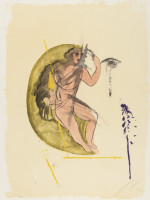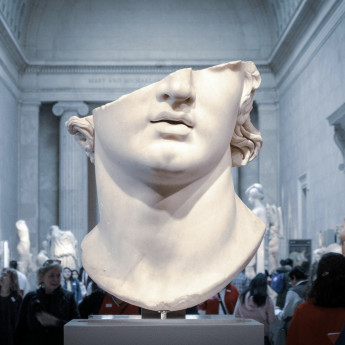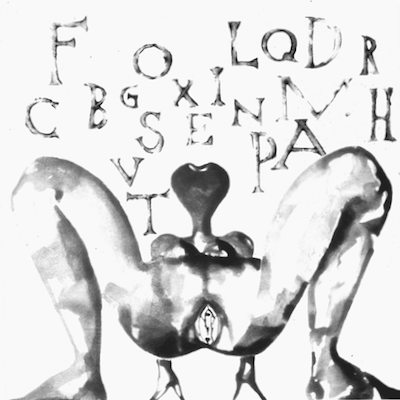
Details
Artist
Styles
Già Collezione Livio Collina Bologna. // Sandro Chia's Disegno di Donna (1974) presents a hauntingly minimalist composition that captures a delicate and ethereal figure enveloped in a soft green aura. Rendered in oil on canvas, this painting centers on a faint, almost ghostly outline of a reclining female form. The figure’s pale contours are gently suspended within a diffused green cloud, creating a sense of introspection and otherworldliness. This 100 cm square artwork invites contemplation on themes of presence and absence, as Chia blurs the line between form and void, hinting at an emotional depth within the simplicity of his palette and brushwork. The painting, part of the Già Collezione Livio Collina in Bologna, exemplifies Chia’s ability to evoke complex emotions through minimalist techniques.
Disegno di Donna, 1974
form
Medium
Size
100 x 100 cm
- Inches
- Centimeters
Edition
Price
- USD
- EUR
- GBP
Details
Artist
Styles
Già Collezione Livio Collina Bologna. // Sandro Chia's Disegno di Donna (1974) presents a hauntingly minimalist composition that captures a delicate and ethereal figure enveloped in a soft green aura. Rendered in oil on canvas, this painting centers on a faint, almost ghostly outline of a reclining female form. The figure’s pale contours are gently suspended within a diffused green cloud, creating a sense of introspection and otherworldliness. This 100 cm square artwork invites contemplation on themes of presence and absence, as Chia blurs the line between form and void, hinting at an emotional depth within the simplicity of his palette and brushwork. The painting, part of the Già Collezione Livio Collina in Bologna, exemplifies Chia’s ability to evoke complex emotions through minimalist techniques.
- Recently Added
- Price (low-high )
- Price (high-low )
- Year (low-high )
- Year (high-low )
Sandro Chia
Untitled (Columbus: In Search Of A New Tomorrow), 1992
Limited Edition Print
Screen-print
Inquire For Price
What is Transvanguardia ?
Transavanguardia is the Italian version of Neo-Expressionism, referring to an art movement that emerged in Italy and other parts of Western Europe during the 1970s and 1980s. The term translates to beyond the avant-garde. Transavanguardia arose as a reaction against the dominance of conceptual art, reintroducing emotion and reviving painting as a primary medium. The movement marked a return to mythic imagery and figurative art, celebrating a rediscovery of traditional forms and themes in a contemporary context.



















